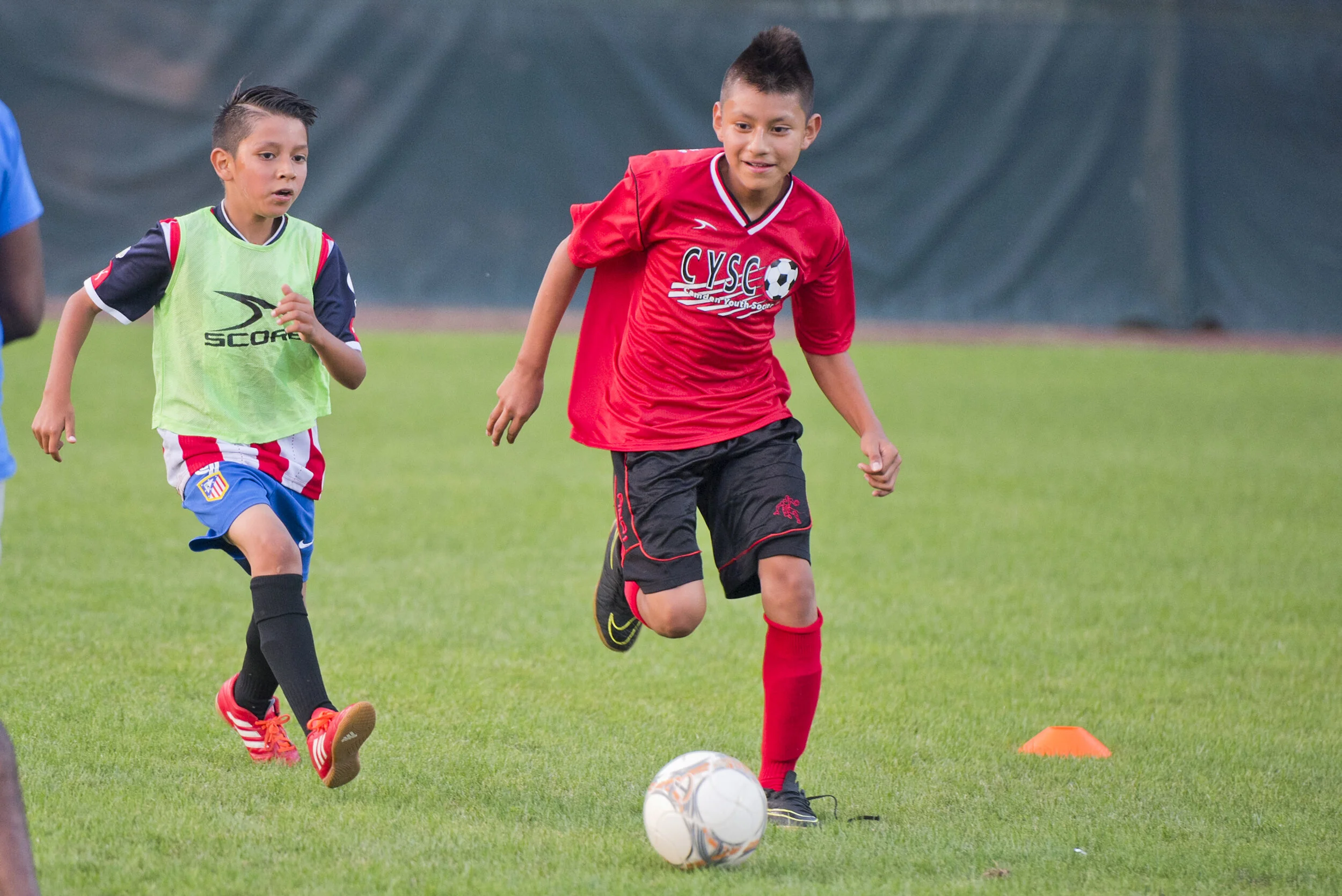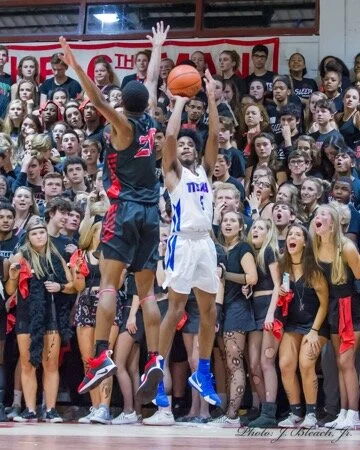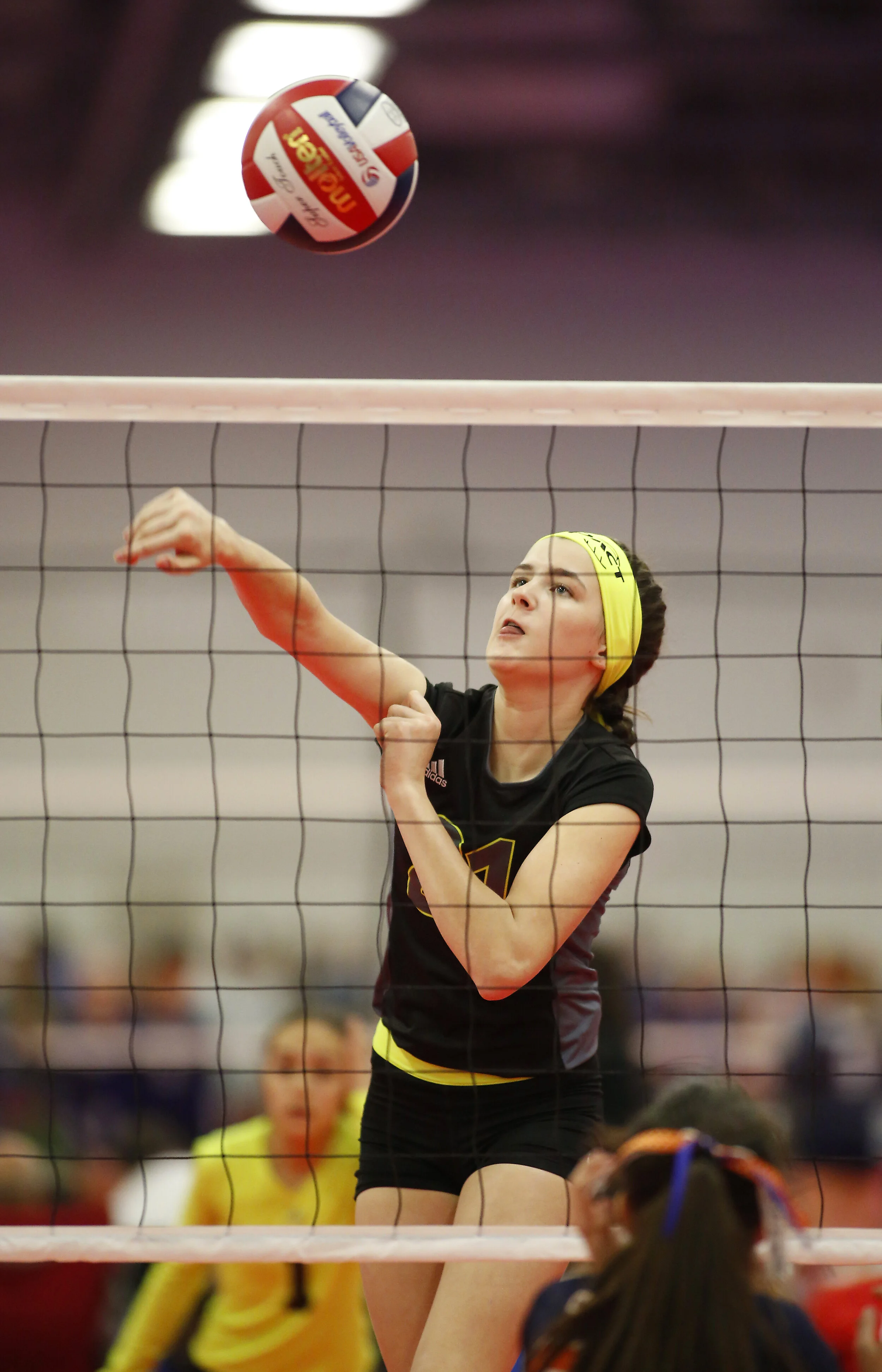Call for Leadership
Call for Leadership is Project Play’s annual assessment of next steps in building healthy children through sports. The article was drafted by the Aspen Institute Sports & Society Program, with Tom Farrey as lead author, and pulls ideas from across the Project Play network.
What the Future Needs Now
A year from now, the pandemic finally will be past us. (Right?)
A year from now, we will have begun to settle into the new normal of youth sports in America, the next iteration in a journey that began 120 years ago.
Phase one was the first two decades of the past century when business and political leaders coalesced around the idea of youth sports as a tool of nation-building. They carved out thousands of parks and recreation spaces in urban areas teeming with pollution and new immigrants, introduced school-based athletics at scale, and promoted recently invented team sports like basketball and volleyball.
Phase two was triggered by the Great Depression. Federal investment to get people back to work built scores of pools, gyms, and other athletic infrastructure. Also, the delivery mechanism for youth programs began to shift. Below high school, schools began to step away from offering sports teams, and volunteer-led community organizations like Little League and Pop Warner filled the void.
Phase three was largely spawned by happenstance. President Richard Nixon signed into law Title IX, a statement of non-discrimination in public education. No one fully anticipated its eventual impact on sports, how it would lay the groundwork for the rise of girls’ and women’s sports broadly – as well as the manic chase for the NCAA athletic scholarship and preferential admission to selective universities, at least for families that could underwrite the exercise.
That’s the sport ecosystem that we took into the pandemic. A 20th century model that served the public interest in many ways, but one with major gaps in access made wider by the privately funded pursuit of extrinsic, downstream rewards. Perhaps you’ve read the insights in our State of Play report. One more data point: In 2019, 56.1% of youth ages 6 to 17 “participated on a sports team or took sports lessons after school or on weekends,” the criteria used by the federal government to measure youth sports participation. That’s down from 58.4% in 2017.
The drop came at a time when scores of organizations have acted to address access and quality gaps. We have honored more than a hundred of them through our Project Play Champions program, helped to mobilize others through our Project Play 2024 roundtable, and recognized the good work of many grassroots providers in our local State of Play reports. Many of them saw participation gains.
The pandemic underscored the real problem, one that we’ve talked about since the inception of Project Play in 2013: A de facto youth sport system that is dysfunctional at best, broken at worst. It’s an up-or-out model found in communities across the country that structurally pushes aside kids from low-income homes, late bloomers, and other disadvantaged populations, through early-forming, expensive travel teams and a lack of quality alternatives.
Barely two months into the pandemic, travel teams began returning to play. Demand from the clubs and parents at the center of the sports tourism industry has been strong, even with some operators going out of business. Community-based programs – lower-cost in-town recreation leagues and other options that are less entrepreneurial and often wither after the grade school years – were slower to return, leaving many kids physically inactive. While parents reporting that more children did something active in 2020, a CDC study of more than 400,000 children and teens found their body mass index had doubled during the pandemic. Kids ages 6 to 11 had the largest increase in their rate of BMI change.
The platform for action that Project Play put forth in last year’s Call for Leadership offered a roadmap forward in building a better model for youth sports – phase four, if you will, one optimized to the needs of young people in the 21st century.
The good news: There’s been major progress made in putting in place key pieces that can turn historic challenge into history-making opportunity.
The challenge: The opportunity is now, and the window will close.
Below is where we, collectively, are on the four items identified as foundational.
1
Recognize the right of every child to play
That’s how Aspen phrased the concept. A working group of human rights and sports policy experts broadened it to include the human rights that children have when engaged in programs led by adults. The Children’s Bill of Rights in Sports was released in August, a resource designed to help stakeholders grow access to sports while establishing minimum conditions under which youth are served.
At launch, more than 60 organizations endorsed the bill of rights. Among them: U.S. Olympic & Paralympic Committee, YMCA of USA, National Recreation and Park Association, Little League International, ESPN, Under Armour, Hospital for Special Surgery, UNICEF USA, Ralph C. Wilson, Jr. Foundation, and more than a dozen National Governing Bodies including U.S. Soccer Federation, U.S. Tennis Association, USA Baseball, USA Hockey, and USA Gymnastics. Since then, many more from the eight sectors that touch the lives of children have signed on (Join them!).
That level of embrace can help foster a shared cultural understanding about the right of all youth to play and to develop as people through sports. Inge Anderson, one of the architects of Norway’s world-renowned sport system, called it “the biggest paradigm change in US Sport in your modern sport history,” for centering the needs, voice and best interests of the child in the design of programs.
National youth sports providers such as i9 Sports and Starlings Volleyball USA promptly began using the bill of rights to identify and address gaps in the program delivery. More organizations will need to do that, at scale, encouraged by the stakeholder groups (NGBs, parents and youth, grant-makers, others) that influence them. Look for more support on that from Project Play in 2022.
One of the strongest opportunities to drive adoption has emerged in soccer. Next year, FIFA will select the 11 U.S. cities that host games at the 2026 men’s World Cup. It’s one of the first mega-sporting events in which bid cities have been encouraged to demonstrate their commitment to child rights and access to sport. Human rights leaders are trying to get cities to release their human rights plans.
Read Children's Bill of Rights in Sports, add your organization's endorsement, and learn how to put it to use here.
2
Enhance the capacity of local providers
As recognized in the platform for action, one of the greatest needs in revitalizing in-town leagues and community-based play is qualified coaches. That means adults trained in key competencies in leading youth, from how to run a quality practice to effective communication techniques to basic safety conditions such as First Aid and injury prevention strategies.
Progress in this area was limited by the pandemic-related disruptions. Park and recreation staff around the country got laid off. Many small non-profits providers struggled to survive. On the upside, easy-to-use products to train coaches hit the market, new investments were made to help providers develop social and emotional skills in children, and efforts were advanced to modernize and digitize the registration and record-keeping of programs. National service programs that deliver coaches to low-income communities got a federal funding boost.
The biggest advance may have been this: Kids playing on their own. The surge in participation in sports and activities like golf, tennis, surfing, trampoline, and fitness exercise underscored the importance of the family as local sport provider.
3
Fund community-based play
In response to the killings of George Floyd and others that convulsed the nation, corporations such as Nike, ESPN and Under Armour grew or sharpened their grantmaking on programs that serve Black youth and low-income communities. DICK’S Sporting Goods went directly to qualified families, through contributions to a debit-card program that allows them to apply $150 discounts four times a year on recreational programs. Solutions also pushed up from the grassroots, in places like Cambridge, Mass., where the local youth soccer organization de-emphasized its travel program, took measures to rebuild its low-cost, city-based league through middle school – and saw participation and local donations grow.
But the deepest new investments were made by government. They were unprecedented.
In April, New York became the first state to legalize a form of sports betting with a dedicated cut to youth sports programs. Acting on an idea conceptualized by the Aspen Institute’s Sports & Society Program and urged on by a coalition of grassroots sports providers and LeagueApps, state assembly member Monica Wallace was able to carve out 1% of proceeds, up to $5 million a year, for a grant program. Versions of this model are now under consideration in other states considering the legalization of sports betting, including Ohio and Massachusetts.
At the federal level, the Land and Water Conservation Fund began to receive full, permanent funding for the first time since the program’s inception in 1965 – $900 million annually. State and local communities currently get 40% of that in the form of matching grants to build and restore outdoor recreation facilities. In May, the Biden Administration began distributing $150 million from that allocation for economically disadvantaged communities.
Then there’s the river of federal aid tied to the pandemic. The American Rescue Plan includes $350 billion for states and local governments to address economic and social impacts, including investments in parks, trails and open spaces. Another $22 billion goes to school districts, with 20% of that dedicated to learning recovery efforts such as afterschool and summer programs. These are resources that proponents of sport programs and infrastructure can access, with local advocacy and partnerships.
“There is a great deal of federal money for outdoor recreation available now and to be distributed in the coming years,” said Kyle Simpson, director of government affairs at the National Recreation and Park Association. “Now is the time to work with city and state leaders to ask them to prioritize equitable access to recreation and sports.”
Read NRPA guidance on how sports and recreation programs and stakeholders can tap into the billions of new funding now flowing into states and cities through the American Rescue Plan here.
4
Embrace sports governance
As noted in last year’s Call for Leadership, the purpose of governance is to balance competing interests. The need for as much in youth sports only grew as the pandemic raged on. Public health authorities set restrictions on return to play to limit spread of the virus. Some providers parents pushed back, lobbying overwhelmed governors who lack institutional expertise in sports programming. Some operators ignored the restrictions, holding unauthorized games without referees or any accountability. Some kids got injured and sick. Some parents got frustrated and scared.
Now is the time to work with city and state leaders to ask them to prioritize equitable access to recreation and sports.
Now it’s a new school year, young kids are now among the most vulnerable to variant, and medical societies are reluctant to update their recommendations. Return to play has become deeply, sadly political, without any mechanism to negotiate shared solutions. The best interests of the child suffer.
Legislators in Massachusetts and New Jersey have introduced bills calling for state oversight of youth sports. The catalyst was not the virus, but the collapse of a prominent soccer club under FBI investigation for visa fraud involving coaches recruited from abroad. The bill in Massachusetts proposes the creation of a nine-member commission that would consider the financial pressures on families and organizations that have emerged in youth sports.
Unchecked, those pressures are certain to grow.
In July, the NIL era was ushered in. College athletes are now allowed to market themselves to sponsors and cash in on social media deals. Those opportunities are starting to emerge for younger athletes as well. As they do, how to ensure that minors are not exploited by adults (including parents) in a manner that jeopardizes their rights to education, and health and safety protections?
The professionalization of youth sports isn’t inherently bad. But it does not mean anything-goes exploitation, as often the term is used. Professionalization means standards, for coaches and the programs and industries that engage youth.
Major League Soccer is a bellwether. Top prospects often sign professional contracts as minors (New York FC recently signed a 14-year-old). There’s little agonizing about this anymore because the MLS academies they emerge from generally embrace best practices in talent and child development. It’s been the opposite story in basketball, where amateurism has fostered an environment lacking standards and stories of exploitation are so common that they are cliché.
The focus of Project Play is on giving all children the opportunity to develop through sports, not just the best athletes. But it’s never been possible to reimagine youth sports in a form that optimizes outcomes for all while ignoring the part of the system committed to identifying elite talent, and the families that largely underwrite it. It shapes behavior down to the entry level of sports, a reality that will get become increasingly apparent as we bid adieu to amateurism.
As the transition unfolds, we need to ask a foundational question: What’s the purpose of sports in our society? Who do we want it to serve? And for leaders: What is the role of my institution within the evolving ecosystem? The high school sports establishment is struggling with this question now. Given the rise of private clubs as the pipeline to NCAA roster spots in most sports, plus the research showing the cognitive and educational benefits of sports participation, how much do we adjust our sports model to accommodate the needs of all students, not just the best athletes who populate interscholastic teams?
Next March at the Project Play Summit, our program will release the final report of our year-long Reimagining School Sports project. We have scoured the country for the most innovative models, distributed $160,000 in grants to them with the help of partners, and analyzed federal government data on trends in high school sports. As you will see, there was a sizable drop between 2013 and 2017 in schools offering any sports teams, according to an Aspen Institute-commissioned analysis of the Civil Rights Data Collection conducted by Resonant Education.
Not good.
Unless that news unlocks resolve to build a better sports delivery system.
A year from now, once Congress decides to appropriate the funding for an effort it already has approved, the Olympic reform commission will have completed its work. Hopefully, it recognizes the important role the U.S. Olympic & Paralympic Committee and its affiliated National Governing Bodies need to play in promoting best practices in youth sports, and their need for support and accountability – or recommend an alternative vehicle to drive progress.
A year from now, school boards and principals will have had a chance to reflect on the mental and physical health needs of students, many of whom suffered during the pandemic. Perhaps they will see the data and start identifying additional ways to supply or connect students with the activities they desire. Innovative partnerships will form with parks and recs and community sport provider, taking advantage of new government investments.
A year from now, phase four of youth sports with take shape. Or it won’t.
Here’s to hoping that leaders understand the historic moment they inhabit.













